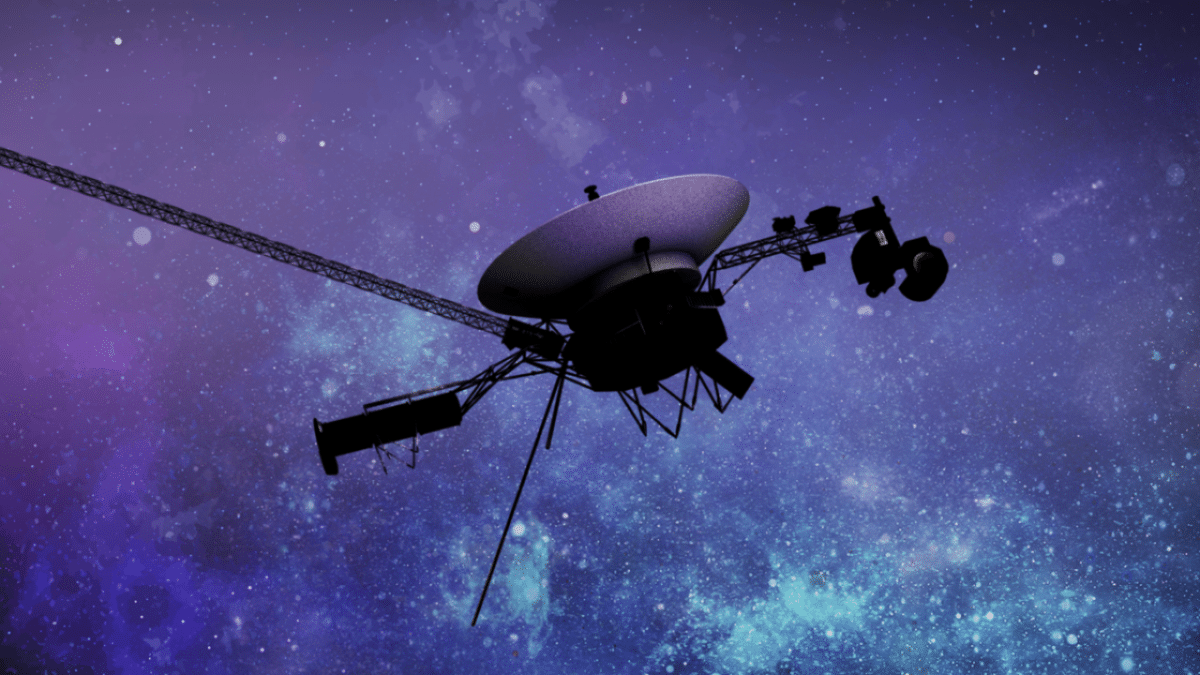Nearly four months after NASA's Voyager 1 probe stopped sending scientific and technical data to Earth, turmoil is growing at the US space agency. National Public Radio (NPR) quoted a person in charge of the farthest probe from Earth as saying: “Frankly, I am very concerned.” The New York Times has already done so A kind of obituary has been published, but, like NPR, points to statements by NASA officials that not all options have been exhausted.
advertisement
According to project manager Susan Dodd, there is still a list of measures that can be tried. In an attempt to fix the probe remotely, NASA is likely to undertake increasingly risky attempts in the next few weeks.
Stimulating work with old circuit diagrams
In December, NASA announced that one of the three computers aboard Voyager 1 had been sending unwanted data since November. The Flight Data System (FDS) is responsible for, among other things, collecting data from scientific instruments and assembling them with technical information into packages that are transmitted to Earth. Since the problems began, only a carrier signal has reached Earth confirming that the probe is active. There are no indications of other errors; In addition, experts could confirm that the probe was receiving orders from Earth. At the beginning of February, NASA finally announced that it would switch the probe to a different mode in order to isolate the fault. Maybe it wasn't successful.
NPR quoted project scientist Linda Spilker Now realizing that the team is having a lot of fun trying to solve the problem. There will be sticky notes with blueprints all over the wall, and everyone will be trying to get into the heads of the people who designed the lander in the 1960s and 1970s. Today's team wants to know why they did something exactly this way and how we can figure out exactly what was going on. So Spilker is cautiously optimistic: “There's a lot of creativity here.” At the same time, she admits that this is a tedious process that may take weeks or months. “We will keep trying and things will not be quick,” Dodd added.
Trying to isolate and correct the fault on Voyager 1 is complicated by several circumstances. Unlike current probes, there are no simulators on Earth for this ancient model; To solve the problem, decades-old paper instructions must be found and combed through. Many of the people who developed and built the device have long since retired or died. The work is made more difficult by the enormous distance traveled by the probe: signals there take more than 22 hours, and the response takes the same time to reach Earth. Added to this is the age of the sensors themselves, where something could fail at any time.
In use for decades
Voyager 1 and its sister probe Voyager 2 were launched in 1977 and were able to take advantage of a rare constellation on their journey in which the four largest planets in the solar system came particularly close to each other. Both visited Jupiter and gained momentum from it to Saturn, where their paths diverged: Voyager 1 launched from the level of the solar system, and Voyager 2 set a course for Uranus and Neptune. Originally only a four-year mission was planned; They have now been on the road for 46 years and are still active. The Voyager program is one of NASA's greatest successes. More recently, the Voyager twins reached interstellar space – since there were a lot of failures in space probes at the time, there were two of each that mattered.
(meh)

“Social media evangelist. Baconaholic. Devoted reader. Twitter scholar. Avid coffee trailblazer.”







More Stories
These brands are most vulnerable to phishing scams
Apple Maps Now Has a Web Version and Wants to Challenge Google Maps
Best AirDrop Alternatives for Android